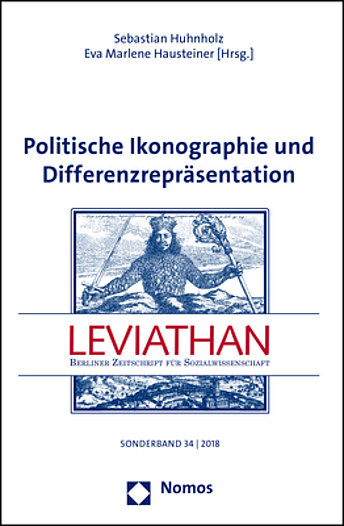englischUntil now, the visual depiction of political rule has been characterised by portrayals of power and unity, and research has focused on these representations of political identity as opposed to representations of difference in politics, which are often especially productive. In democracies in particular, the free expression of otherness, variety and diversity is essential for integration, communication and political stabilisation. Criticism and renewal of democratic orders therefore also occur in public discussions, which are imbued with symbolism, on the two principal dimensions of political representation: identity and difference.
This book thus focuses on the different dimensions of juxtaposing, extending and contesting the representation of collective identities. The motifs, campaigns and materials it examines range from the iconography of architecture for the working class and in capital cities, obelisks, street art and naturalisation ceremonies to symbols such as the constitution, transparency and the circle.
With contributions by
Vincent August, Lisa Bogerts, Anna Chwialkowska, Iris Därmann, Paula Diehl, Elisabeth Haas, Eva Marlene Hausteiner, Sebastian Huhnholz, Maria Jakob, Marcus Llanque, Philip Manow, Michael Minkenberg, Lena Sophia Schacht, Daniel Schulz, Felix Steilen, Siegfried Weichlein.
Die visuelle Inszenierung von Herrschaft ist bislang durch Darstellungen von Macht und Einheit geprägt. Weniger erforscht als diese Identitätsrepräsentation ist die oft besonders produktive Seite von Differenzrepräsentation. Insbesondere in Demokratien ist die freie Artikulation von Andersheit, Verschiedenheit und Vielfalt unerlässlich für Integration, Kommunikation und politische Stabilisation. Kritik und Erneuerung demokratischer Ordnungen vollziehen sich daher auch in symbolstarken öffentlichen Auseinandersetzungen um die beiden Leitdimensionen der politischen Repräsentation, Identität und Differenz.
Dieser Sonderband widmet sich darum Dimensionen der Brechung, Erweiterung und Repräsentationskämpfe kollektiver Identitäten. Die betrachteten Motive, Kampagnen und Materialien reichen von der Ikonographie demokratischer Hauptstadt- und Arbeiterwohnbauarchitektur über Obelisken, Street Art, Einbürgerungsfeiern bis zu Symbolen wie dem der Verfassung, der Transparenz und des Kreises.
Mit Beiträgen von
Vincent August, Lisa Bogerts, Anna Chwialkowska, Iris Därmann, Paula Diehl, Elisabeth Haas, Eva Marlene Hausteiner, Sebastian Huhnholz, Maria Jakob, Marcus Llanque, Philip Manow, Michael Minkenberg, Lena Sophia Schacht, Daniel Schulz, Felix Steilen, Siegfried Weichlein.


